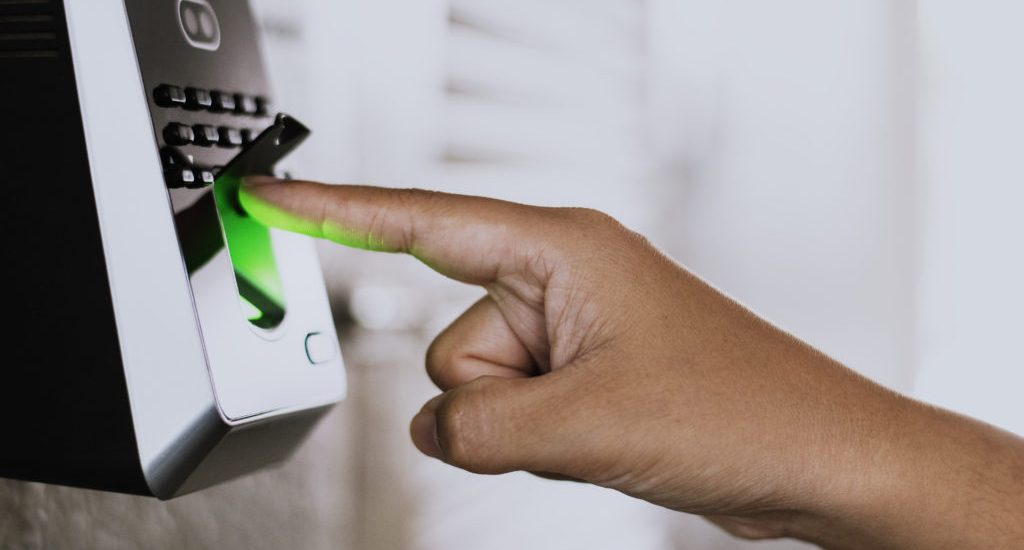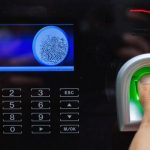- July 12, 2022
- Posted by: simba001
- Category: Security Systems in Kenya

Biometrics are automated methods of recognizing a person based on a physiological or behavioral characteristic. Among the features measured are; face, fingerprints, hand geometry, handwriting, iris, retinal, vein, and voice.
Biometric technologies are becoming the foundation of an extensive array of highly secure identification and personal verification solutions. As the level of security breaches and transaction fraud increases, the need for highly secure identification and personal verification technologies is becoming apparent. Biometric Fingerprint Scanners in Kenya solutions are able to provide for confidential financial transactions and personal data privacy.
Utilizing biometrics for personal authentication is becoming convenient and considerably more accurate than current methods (such as the utilization of passwords or PINs). This is because biometrics links the event to a particular individual (a password or token may be used by someone other than the authorized user), is convenient (nothing to carry or remember), accurate (it provides for positive authentication), can provide an audit trail and is becoming socially acceptable and cost effective.
Introduction to How Fingerprint Scanners Work
Computerized biometric fingerprint scanners have been a mainstay of spy thrillers for decades, but up until recently, they were pretty exotic technology in the real world. In the past few years, however, scanners have started popping up all over the place — in police stations, high-security buildings and even on PC keyboards. You can pick up a personal USB fingerprint scanner for less than Ksh 20,000, and just like that, your computer’s guarded by high-tech biometrics. Instead of, or in addition to, a password, you need your distinctive print to gain access.
In this article, we’ll examine the secrets behind this exciting development in and identity security. We’ll also see how fingerprint scanner security systems stack up to conventional password and identity card systems, and find out how they can fail.
Just like the weather conditions that form clouds or the coastline of a beach, the entire development process of fingerprints is so chaotic that, in the entire course of human history, there is virtually no chance of the same exact fingerprint pattern forming twice.
Fingerprint Basics
Fingerprints are one of those bizarre twists of nature. Human beings happen to have built-in, easily accessible identity cards. You have a unique design, which represents you alone, literally at your fingertips. How did this happen?
People have tiny ridges of skin on their fingers because this particular adaptation was extremely advantageous to the ancestors of the human species. The pattern of ridges and “valleys” on fingers make it easier for the hands to grip things, in the same way a rubber tread pattern helps a tire grip the road.
The other function of fingerprints is a total coincidence. Like everything in the human body, these ridges form through a combination of genetic and environmental factors. The genetic code in DNA gives general orders on the way skin should form in a developing fetus, but the specific way it forms is a result of random events. The exact position of the fetus in the womb at a particular moment and the exact composition and density of surrounding amniotic fluid decides how every individual ridge will form.
So, in addition to the countless things that go into deciding your genetic make-up in the first place, there are innumerable environmental factors influencing the formation of the fingers. Just like the weather conditions that form clouds or the coastline of a beach, the entire development process of fingerprints is so chaotic that, in the entire course of human history, there is virtually no chance of the same exact fingerprint pattern forming twice.
Consequently, fingerprints are a unique marker for a person, even an identical twin. And while two prints may look basically the same at a glance, a trained investigator or an advanced piece of software can pick out clear, defined differences.
This is the basic idea of fingerprint analysis, in both crime investigation and security. A fingerprint scanner’s job is to take the place of a human analyst by collecting a print sample and comparing it to other samples on record. In the next few sections, we’ll find out how scanners do this.
Biometric Fingerprint identification links the access event to a particular individual (a password or token may be used by someone other than the authorized user), is convenient (nothing to carry or remember), accurate (it provides for positive authentication), can provide an audit trail and is becoming socially acceptable and cost effective.
Optical Scanner
A fingerprint scanner system has two basic jobs — it needs to get an image of your finger, and it needs to determine whether the pattern of ridges and valleys in this image matches the pattern of ridges and valleys in pre-scanned images by use of biometric fingerprint scanners in Kenya in Access Control or Time Attendance Systems
There are a number of different ways to get an image of somebody’s finger. The most common methods today are optical scanning and capacitance scanning. Both types come up with the same sort of image, but they go about it in completely different ways.
The heart of an optical scanner is a charge coupled device (CCD), the same light sensor system used in digital cameras and camcorders. A CCD is simply an array of light-sensitive diodes called photosites, which generate an electrical signal in response to light photons. Each photosite records a pixel, a tiny dot representing the light that hit that spot. Collectively, the light and dark pixels form an image of the scanned scene (a finger, for example). Typically, an analog-to-digital converter in the scanner system processes the analog electrical signal to generate a digital representation of this image.
The scanning process starts when you place your finger on a glass plate, and a CCD camera takes a picture. The scanner has its own light source, typically an array of light-emitting diodes, to illuminate the ridges of the finger. The CCD system actually generates an inverted image of the finger, with darker areas representing more reflected light (the ridges of the finger) and lighter areas representing less reflected light (the valleys between the ridges).
Before comparing the print to stored data, the scanner processor makes sure the CCD has captured a clear image. It checks the average pixel darkness, or the overall values in a small sample, and rejects the scan if the overall image is too dark or too light. If the image is rejected, the scanner adjusts the exposure time to let in more or less light, and then tries the scan again.
If the darkness level is adequate, the scanner system goes on to check the image definition (how sharp the fingerprint scan is). The processor looks at several straight lines moving horizontally and vertically across the image. If the fingerprint image has good definition, a line running perpendicular to the ridges will be made up of alternating sections of very dark pixels and very light pixels.
If the processor finds that the image is crisp and properly exposed, it proceeds to comparing the captured fingerprint with fingerprints on file through biometric fingerprint scanners in Kenya.
Advantages of Fingerprint Scanning
There are several ways a security system can verify that somebody is an authorized user. Most systems are looking for one or more of the following:
✅ What you have
✅ What you know
✅ Who you are
To get past a “what you have” system, you need some sort of “token,” such as an identity card with a magnetic strip. A “what you know” system requires you to enter a password or PIN number. A “who you are” system is actually looking for physical evidence that you are who you say you are — a specific fingerprint, voice or iris pattern.
“Who you are” systems like biometric fingerprint scanners in Kenya have a number of advantages over other systems. To name few:
✅ Physical attributes are much harder to fake than identity cards.
✅ You can’t guess a fingerprint pattern like you can guess a password.
✅ You can’t misplace your fingerprints, irises or voice like you can misplace an access card.
✅ You can’t forget your fingerprints like you can forget a password.
Interested in Biometric Fingerprint Scanners in Kenya? Get in touch today on 0700 001779 or Email





